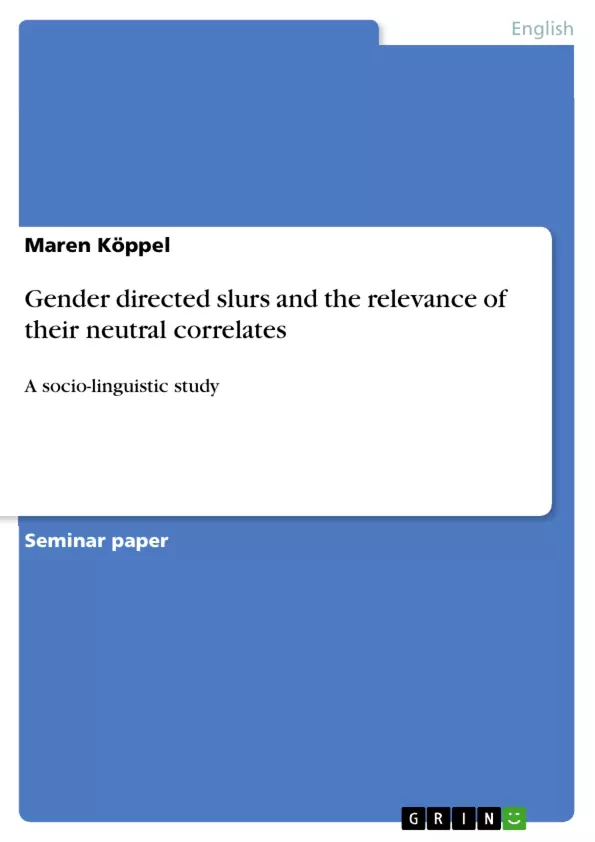For many swearing is part of everyday life. It has various functions from releasing emotions and showing group membership to expressing negatively connotated and bigoted perspectives towards groups or individuals. Besides racial and ethnic slurs, slurs directed towards gender make up a big proportion.
This study will give a brief review of the research within this area and then move on to presenting the different linguistic approaches to slurs. Special focus will be put on the different targets of gendered slurs and on the question whether or not the absence of a neutral counterpart can be defined as a main characteristic of gender-linked derogatory terms.
Inhaltsverzeichnis (Table of Contents)
- I. Introduction
- II. Review of the literature
- III. Linguistic approaches to slurs
- IV. Gendered slurs
- V. Analysis of examples
- VI. Conclusion
Zielsetzung und Themenschwerpunkte (Objectives and Key Themes)
This study aims to provide a comprehensive overview of the research on gender-directed slurs, exploring their linguistic properties and examining the significance of neutral correlates. The study delves into various linguistic approaches to understand the nature and function of slurs, focusing specifically on the different targets of gendered slurs and their potential absence of neutral counterparts.
- The linguistic properties and functions of gender-directed slurs
- The significance of neutral correlates in understanding slurs
- Different linguistic approaches to analyzing slurs
- The targets of gendered slurs and their unique characteristics
- The relationship between neutral counterparts and the derogatory nature of slurs
Zusammenfassung der Kapitel (Chapter Summaries)
- Chapter I: Introduction This chapter introduces the study's focus on gender-directed slurs, highlighting their prevalence and diverse functions within everyday language. It establishes the study's purpose and outlines the key areas of investigation, including the review of relevant literature, different linguistic approaches to slurs, and the analysis of examples.
- Chapter II: Review of the literature This chapter provides a historical overview of the academic interest in slurs, tracing their emergence as a subject of scholarly study. It discusses key works by scholars like Irvin Allen, David Sosa, and others who have contributed to the understanding of slurs and derogatory language. This chapter also introduces the concept of neutral correlates and their significance in analyzing slurs.
- Chapter III: Linguistic approaches to slurs This chapter delves into various linguistic approaches to understanding slurs, examining different perspectives on their semantic and pragmatic properties. It explores theories put forward by scholars like Christopher Hom, Philippe Schlenker, and others who have proposed different interpretations of the meaning and function of slurs.
Schlüsselwörter (Keywords)
This study explores the concept of gender-directed slurs, focusing on their linguistic properties, neutral correlates, and various theoretical approaches. Key themes include derogatory language, linguistic semantics, pragmatic analysis, gendered language, social prejudice, and the role of language in expressing social attitudes. The study seeks to provide a comprehensive understanding of the complex interplay between language and social bias, particularly in the context of gender-directed slurs.
- Quote paper
- Maren Köppel (Author), 2022, Gender directed slurs and the relevance of their neutral correlates, Munich, GRIN Verlag, https://www.grin.com/document/1334954



